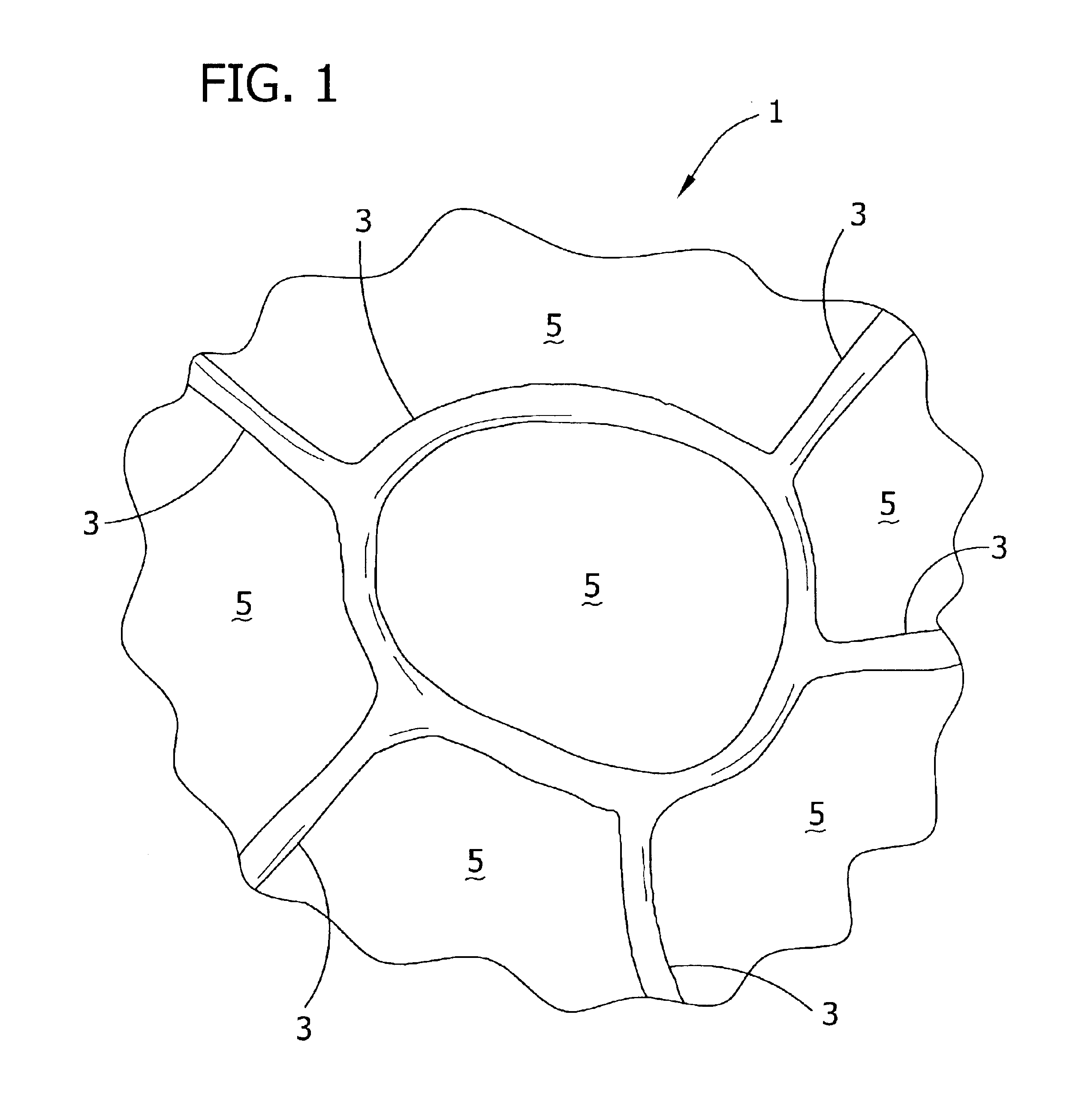Method of making an absorbent composite
a composite material and absorbent technology, applied in the field of absorbent composite materials, can solve the problem of limited absorption properties of absorbent materials
- Summary
- Abstract
- Description
- Claims
- Application Information
AI Technical Summary
Problems solved by technology
Method used
Image
Examples
example
Absorbent composites were formed from foam structures available from BASF of Charlotte, N.C. under the tradename BASOTECT. Each foam structure had a thickness of about 5 mm, a density of about 0.011 g / cc and a compression at 0.9 psi of about 10%. A flowable superabsorbent precursor was fully impregnated into each structure by soaking the structures in a bath of the precursor at certain concentration for at least 1 hour with gentle squeeze several times. The precursor comprised a solution of carboxymethyl cellulose (CMC), available from Hercules Inc. under the designation of cellulose Gum CMC-7H, sodium polyacrylate, available from Aldrich, having a molecular weight of 450,000, a degree of neutralization of about 70% and containing 2% hydroxypropyl cellulose as a latent cross-linker, available from Hercules Inc. under the designation of Klucel-M, or fully neutralized isobutylene-maleic anhydride copolymer sodium salt, available from Kuraray America, Inc., under the trade designation ...
PUM
| Property | Measurement | Unit |
|---|---|---|
| viscosity | aaaaa | aaaaa |
| temperature | aaaaa | aaaaa |
| temperature | aaaaa | aaaaa |
Abstract
Description
Claims
Application Information
 Login to View More
Login to View More - R&D
- Intellectual Property
- Life Sciences
- Materials
- Tech Scout
- Unparalleled Data Quality
- Higher Quality Content
- 60% Fewer Hallucinations
Browse by: Latest US Patents, China's latest patents, Technical Efficacy Thesaurus, Application Domain, Technology Topic, Popular Technical Reports.
© 2025 PatSnap. All rights reserved.Legal|Privacy policy|Modern Slavery Act Transparency Statement|Sitemap|About US| Contact US: help@patsnap.com



